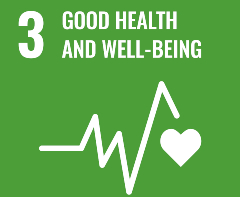
Minimising coronavirus transmission in the workplace
Experts at Manchester are helping to develop effective health and safety measures to reduce the spread of COVID-19 and get society on a route back to normality.
The challenge: minimising transmission
While a large proportion of the UK population have been able to work from home during the coronavirus pandemic, a significant number have been travelling into work to provide essential services.
For those that are in close proximity with others in their jobs or as they travel to and from work, there is a risk of spreading the virus. Increased risks for COVID-19 infection, disease and mortality has been observed in a number of occupations, in particular those working with patients and public. COVID-19 outbreaks have occurred in warehouses and depots as well as in offices, schools, care homes and hospitals, and there have been reports of disease-spreading in meatpacking and food-processing factories.
There is an urgent public health requirement to develop effective health and safety measures to minimise transmissions and help lower risks in the event of future virus mutations or new pandemics.
Identifying risk factors for transmission
The national PROTECT study, led by the Health and Safety Executive involving a consortium of experts and organisations, has been established to address knowledge gaps in risk factors for transmissions and develop solutions to support sectors and economic recovery. This study is one of a number of national core studies that have been funded by the UK government designed to answer essential policy and operational questions about the COVID-19 pandemic.
The project focuses on understanding and mitigating transmission of the disease in the workplace, on transport and in public places. This work is led by Andrew Curran, Chief Scientific Adviser of the Health and Safety Executive and Co-Director of The University of Manchester’s Thomas Ashton Institute. Professor Martie van Tongeren, from the Division of Population Health in the University’s Faculty of Biology, Medicine and Health, is the project’s academic lead on the sector-specific studies theme.
The aim of this theme is to improve understanding of occupational risk factors of disease transmission and morbidity and mortality, through primary data collection and secondary data analyses. For the primary data collection, the team is currently focusing on the public transport and the food processing sectors. The secondary data analyses focus on the ONS mortality and infection survey data, as well as other data sources. In addition to the sector-specific theme, the University is directly involved in PROTECT’s modelling and outbreak investigation strands.
Finally, the Thomas Ashton Institute has been funded through the PROTECT project to conduct a scoping study in the construction industry (Keep the UK Building Safely (KUBS)). This project is led by Professor Neil Bourne, with involvement from Martie van Tongeren and others at the University’s School of Health Sciences. The KUBS project aims to improve our understanding of transmission risks in the industry and how to control and reduce these through the use of data, technology and leadership.
Supporting an effective return to normal operations
There is currently a huge nationwide effort underway to facilitate lifting of the lockdown restrictions. A lot of this focusses on vaccinations and testing, but the need to understand the mechanisms of transmissions in workplaces and other (indoor) environments remains extremely important.
Through interdisciplinary teams assembled by Professors van Tongeren, Bourne and Arpana Verma, Dr Ian Hall and others, the UoM plays an important part in helping to build an understanding of infection rates and transmission risks, as well as the risk reduction strategies that have been put in place to help lower infection.
This work will support our society in its return to normal operations by providing a clearer understanding of the risk of transmission among workers and the general public, and effective mitigation for a number of key sectors, such as food production industries and public transport, where there remains a reluctance from people to use services.
Find out more
- Study to research role of delivery workers in preventing COVID-19 transmission
- Partnership for Research in Occupational, Transport, Environmental COVID Transmission (PROTECT)
- Health Data Research UK: COVID-19 National Core Studies
- The Thomas Ashton Institute
Meet the researchers
- Martie van Tongeren, Professor of Occupational and Environmental Health, Division of Population Health, Health Services Research and Primary Care
- Dr Ian Hall, Reader in Mathematical Statistics
- Professor Arpana Verma, Clinical Professor of Public Health and Epidemiology

